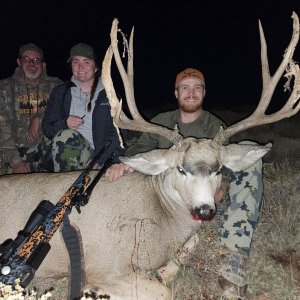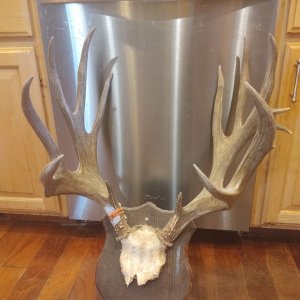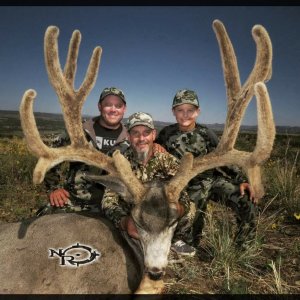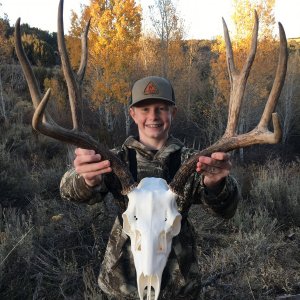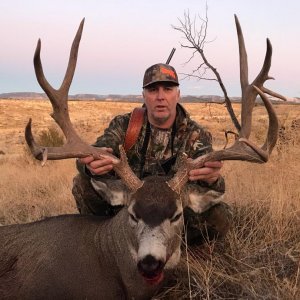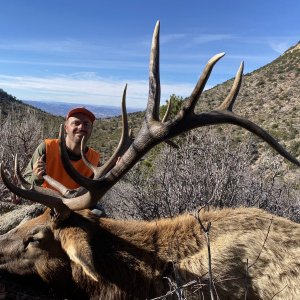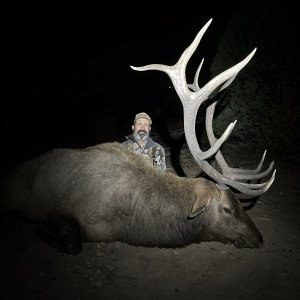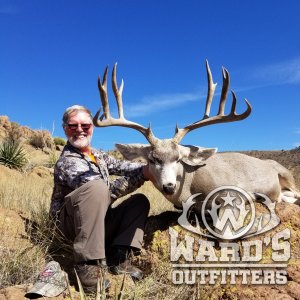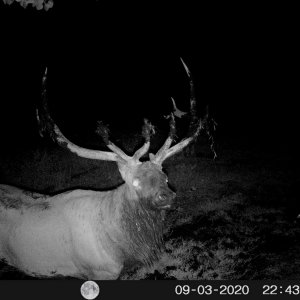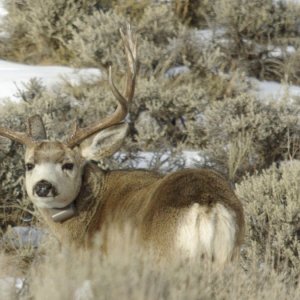E
elkguide
Guest
Posted this in the Nevada thread also.
Just thought that I would share this with everyone on MM that likes to come and check out the sheep here in Northern Nevada, not looking so good to have an outbreak during the winter time when all the sheep are herded up for the winter time with limited food sources due to snow. Hope everyone gives these sheep the space and rest they need to reduce the stress on them and in turn hope it lowers the amount of disease spread throughout the herds.
Date: 1/07/10
Contact: Joe Doucette
Phone: (775) 777-2305
DISEASE REPORTED IN BIGHORN SHEEP NEAR WELLS
On December 29, 2009 the Nevada Department of Wildlife (NDOW) was contacted by concerned sportsmen about a potential disease event affecting Rocky Mountain bighorn sheep in the East Humboldt Range south of Wells. Department of Wildlife biologist Caleb McAdoo responded to the call and confirmed that several sheep showed clinical signs of pneumonia.
Understanding the potential severity of the incident, NDOW biologists and veterinarians from NDOW and the Nevada Department of Agriculture collected samples for disease analysis over the New Year?s weekend.
?Samples have been taken from seven animals and sent to Washington Animal Disease Diagnostic Laboratory for analysis,? said Peregrine Wolff, NDOW veterinarian.
Four ewes were outfitted with ear tags and radio telemetry collars, which will allow the biologists to monitor the sheep movements and conduct health assessments on the animals, as needed. Biologists will continue to monitor the sheep, and lab results should be completed within two weeks.
McAdoo asked that the public avoid the sheep wintering locations, such as the Beverly Hills and Welcome areas outside of Wells, Nevada, in order to avoid any further undue stress on the animals.
Bighorn sheep in Lamoille Canyon, 20 miles outside of Elko, are also affected. NDOW is asking the public to also give the sheep in Lamoille Canyon a wide berth to limit the stress on them during the crucial winter months.
?NDOW would also like to thank the dedicated sportsmen who provided valuable information regarding this disease event,? said McAdoo, ?This information allowed us to get on the ground immediately to assess the situation.?
?We are actively monitoring the situation, and working to identify options to manage this disease event,? said Wolff.
The Nevada Department of Wildlife (NDOW) protects, restores and manages fish and wildlife, and promotes fishing, hunting, and boating safety. NDOW?s wildlife and habitat conservation efforts are primarily funded by sportsmen?s license and conservation fees and a federal surcharge on hunting and fishing gear. Support wildlife and habitat conservation in Nevada by purchasing a hunting, fishing, or combination license. For more information, visit www.ndow.org.
Just thought that I would share this with everyone on MM that likes to come and check out the sheep here in Northern Nevada, not looking so good to have an outbreak during the winter time when all the sheep are herded up for the winter time with limited food sources due to snow. Hope everyone gives these sheep the space and rest they need to reduce the stress on them and in turn hope it lowers the amount of disease spread throughout the herds.
Date: 1/07/10
Contact: Joe Doucette
Phone: (775) 777-2305
DISEASE REPORTED IN BIGHORN SHEEP NEAR WELLS
On December 29, 2009 the Nevada Department of Wildlife (NDOW) was contacted by concerned sportsmen about a potential disease event affecting Rocky Mountain bighorn sheep in the East Humboldt Range south of Wells. Department of Wildlife biologist Caleb McAdoo responded to the call and confirmed that several sheep showed clinical signs of pneumonia.
Understanding the potential severity of the incident, NDOW biologists and veterinarians from NDOW and the Nevada Department of Agriculture collected samples for disease analysis over the New Year?s weekend.
?Samples have been taken from seven animals and sent to Washington Animal Disease Diagnostic Laboratory for analysis,? said Peregrine Wolff, NDOW veterinarian.
Four ewes were outfitted with ear tags and radio telemetry collars, which will allow the biologists to monitor the sheep movements and conduct health assessments on the animals, as needed. Biologists will continue to monitor the sheep, and lab results should be completed within two weeks.
McAdoo asked that the public avoid the sheep wintering locations, such as the Beverly Hills and Welcome areas outside of Wells, Nevada, in order to avoid any further undue stress on the animals.
Bighorn sheep in Lamoille Canyon, 20 miles outside of Elko, are also affected. NDOW is asking the public to also give the sheep in Lamoille Canyon a wide berth to limit the stress on them during the crucial winter months.
?NDOW would also like to thank the dedicated sportsmen who provided valuable information regarding this disease event,? said McAdoo, ?This information allowed us to get on the ground immediately to assess the situation.?
?We are actively monitoring the situation, and working to identify options to manage this disease event,? said Wolff.
The Nevada Department of Wildlife (NDOW) protects, restores and manages fish and wildlife, and promotes fishing, hunting, and boating safety. NDOW?s wildlife and habitat conservation efforts are primarily funded by sportsmen?s license and conservation fees and a federal surcharge on hunting and fishing gear. Support wildlife and habitat conservation in Nevada by purchasing a hunting, fishing, or combination license. For more information, visit www.ndow.org.


